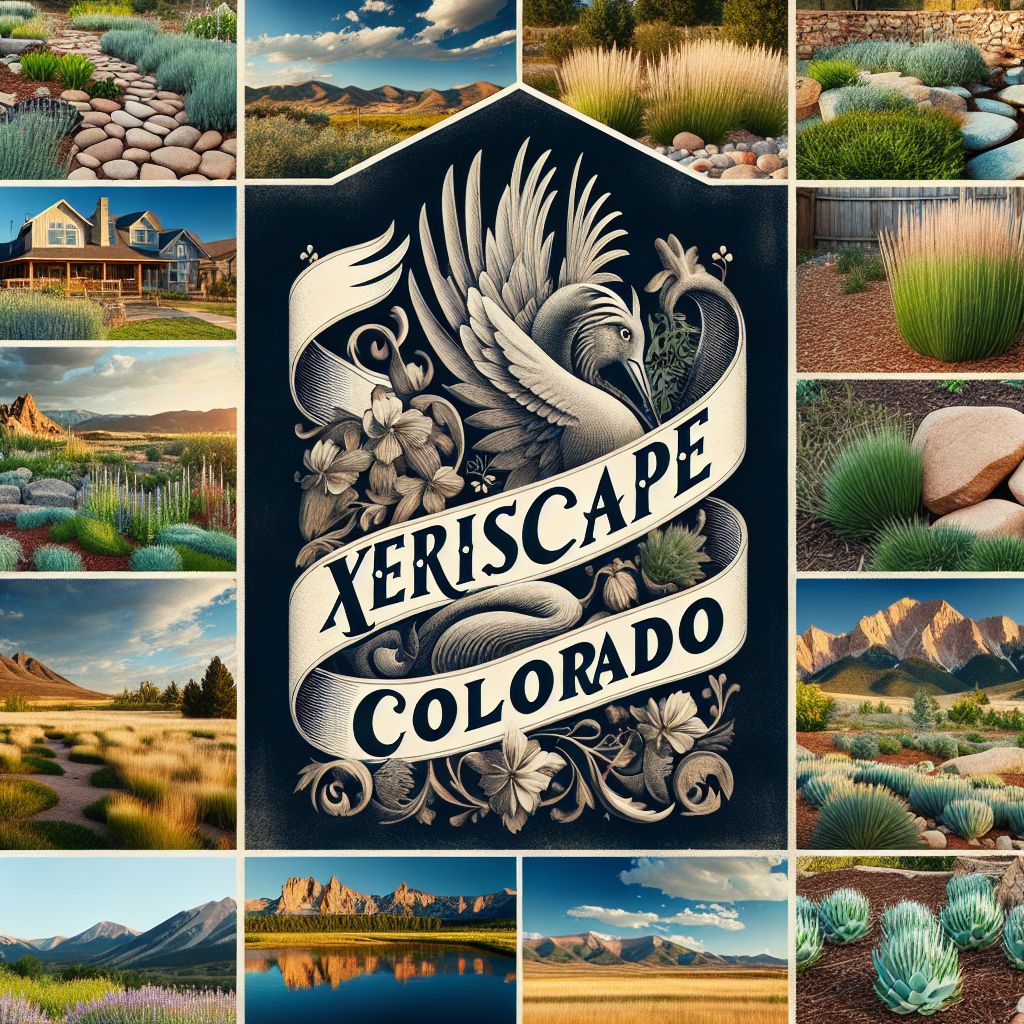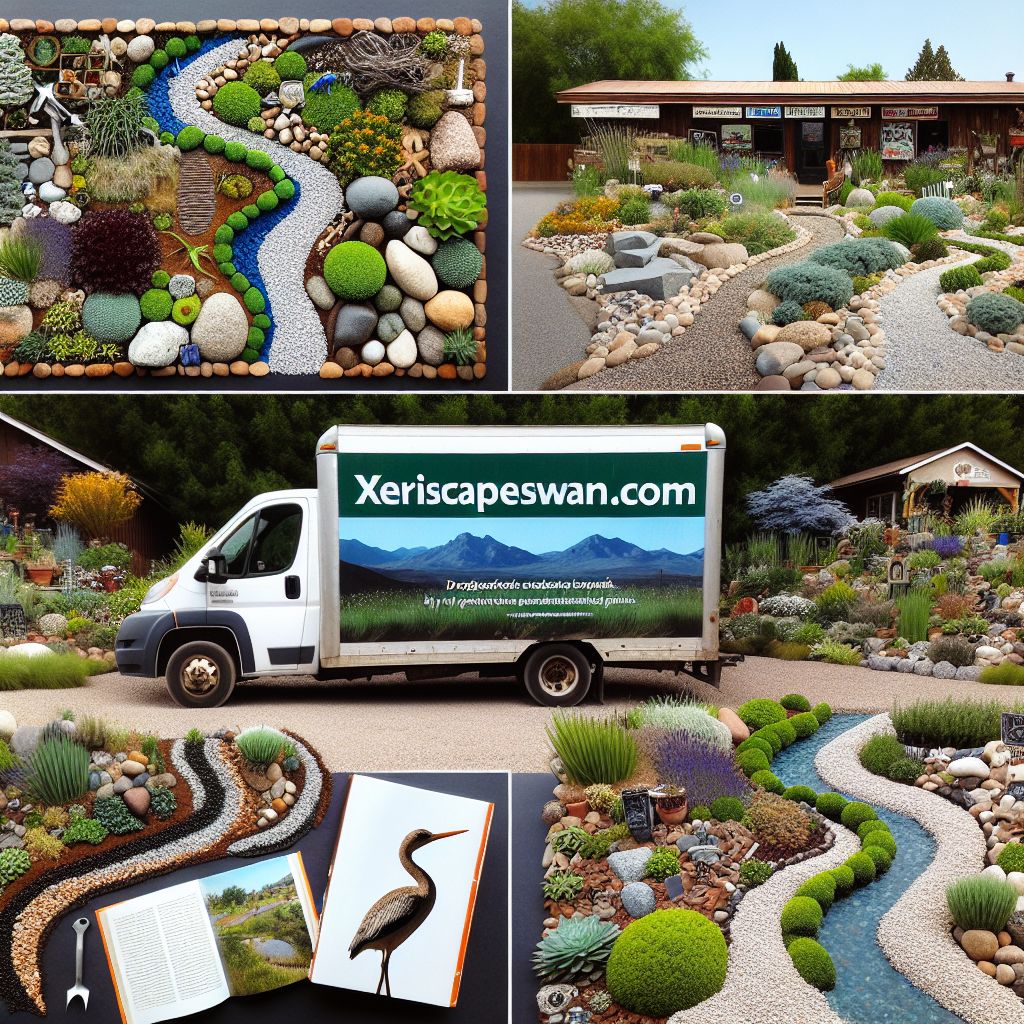
Key Takeaways
- In Colorado, HOAs can’t ban
, but they do have a say in the aesthetics. - To get your xeriscape plans approved, create a detailed proposal that includes drought-tolerant plants and complies with your HOA’s design guidelines.
- Use xeriscaping to conserve water, reduce maintenance, and enhance your property’s beauty.
- Maintain your xeriscape with proper plant selection, mulching, and efficient irrigation.
- Stay informed about state laws and local ordinances that support xeriscaping to navigate HOA processes successfully.
Navigating Xeriscaping Guidelines in Homeowner Associations (HOAs) in Colorado
Imagine transforming your yard into a lush, vibrant landscape that thrives in Colorado’s semi-arid climate, all while cutting down on water usage and maintenance. That’s the beauty of xeriscaping. But if you’re part of a Homeowner Association (HOA), you might wonder how to make this dream a reality without stepping on any regulatory toes. Let’s dive into the world of HOA xeriscaping guidelines and landscape tips that not only abide by the rules but also champion sustainable living.
Understanding HOA Landscape Guidelines and the Emergence of Xeriscaping in Colorado
Common Landscaping Rules within Colorado HOAs
Most Colorado HOAs have rules to maintain a certain look and feel within the community. These might include specifications on lawn height, color, and the types of plants you can use. But here’s the twist: Colorado is known for its water scarcity, which means that the traditional, water-guzzling green lawn is not the most practical choice.
Benefits of Xeriscaping in Semi-Arid Regions
Xeriscaping, which involves landscaping with plants that require minimal water, is a game-changer for Coloradans. It’s not just about cacti and rocks; xeriscaping can be lush and colorful. The key benefits are:
- Water conservation: Essential in drought-prone areas.
- Lower maintenance: Xeriscaped yards typically need less mowing, weeding, and watering.
- Year-round beauty: With the right plants, your yard can look great across all seasons.
Deciphering HOA Regulations on Xeriscaping in Colorado
Navigating Legal Protections for Drought-Tolerant Landscaping
Good news: Colorado law protects your right to xeriscape. HOAs can’t outright ban it. However, they can guide the style and placement of your xeriscaped areas. So, it’s about finding that sweet spot where your vision aligns with the HOA’s aesthetic standards.
Steps to Get Your Xeriscape Design Approved
Getting your HOA to nod in agreement for your xeriscape plan involves a few strategic steps:
- Understand your HOA’s guidelines inside out.
- Create a detailed design plan that showcases how your xeriscape will enhance the community’s appearance.
- Communicate how xeriscaping aligns with Colorado’s water conservation goals.
Now, let’s get into the nitty-gritty of how to make this happen.

Implementing Xeriscaping in Compliance with HOA Rules in Colorado
Submitting and Tailoring Xeriscape Plans for HOA Approval in Colorado
Drafting a Proposal that Meets Both Aesthetic and Functional Needs
Start by crafting a proposal that is as much about form as it is about function. Your design should tell a story of beauty, ease, and sustainability. It’s not just about the types of plants but also their arrangement, color palette, and how they’ll grow over time. For inspiration and specific guidelines, consider reviewing the Colorado xeriscaping guide that provides insights on drought-resistant native plants and front yard design tips.
Key Elements to Include in Your Landscape Design
Your xeriscape plan should detail:
- The types of plants you’ll use, focusing on native and drought-tolerant species.
- Soil amendments or mulches to improve water retention and reduce evaporation.
- An efficient irrigation system, like drip lines or soaker hoses, that targets plant roots directly.
Remember, your HOA is looking for a plan that adds value to the community. Show them how xeriscaping does just that.
Adhering to Permitted Xeriscape Elements and Overcoming Restrictions in Colorado
Finding Creative Solutions within HOA Guidelines
While you might encounter restrictions, see them as opportunities for creativity. If your HOA has specific plant lists, explore those plants’ diverse varieties. Or, if there are limits on hardscaping, use materials that complement the community’s aesthetic while still saving water.
Negotiating Landscape Limits: Front vs. Backyard Considerations
Often, HOAs are more flexible with what you do in your backyard compared to the front. If your heart is set on a particular element that’s not front-yard approved, consider incorporating it into your backyard design where it’s out of the public eye but still brings you joy.
Next up, we’ll talk about how to maintain your xeriscape and ensure it stays in tip-top shape, pleasing both you and your HOA.
Ensuring Ongoing Xeriscape Compliance and Maintenance in Colorado
Maintenance Tips to Keep Your Xeriscape Thriving
Once your xeriscape is in place, keeping it looking its best is crucial. Start by choosing plants that are not only drought-tolerant but also well-suited to Colorado’s climate. Regular weeding will prevent unwanted plants from taking up valuable moisture. Mulching is your best friend—it retains water, keeps roots cool, and deters weeds. And don’t forget to adjust your irrigation as needed; even xeriscapes require occasional watering, especially during the hottest months.
Handling Adjustments and HOA Feedback Post-implementation
After you’ve implemented your xeriscape, stay open to feedback from your HOA. If they have concerns, address them promptly and show willingness to make reasonable adjustments. It’s all about cooperation—your goal is a beautiful, sustainable yard that meets both your needs and the HOA’s standards.
Striking a Balance Between Aesthetics and Water Conservation in Colorado
Addressing HOA Concerns about Xeriscape Appearance in Colorado
Some HOAs may worry that xeriscaping means a stark, barren landscape, but that’s far from the truth. With a rich palette of native plants, your xeriscape can burst with color and life. Show your HOA examples of well-designed xeriscapes to ease their concerns and demonstrate the potential beauty of these sustainable landscapes.
Overcoming Misconceptions About Xeriscaped Yards
It’s common for people to think that ‘xeriscape’ means ‘zero-scape.’ This couldn’t be further from the truth. A well-planned xeriscape is full of life and can even include elements of traditional landscaping. It’s all about choosing the right plants and materials that require minimal water and maintenance.
Enhancing Curb Appeal with Drought-Resistant Plants
Drought-resistant doesn’t mean dull. Many plants that thrive in Colorado’s dry conditions have vibrant flowers and interesting foliage. Plants like the Blue Mist Spirea or the Rocky Mountain Penstemon add a splash of color while conserving water. Combine these with ornamental grasses for texture, and you’ve got a yard that’s both eye-catching and eco-friendly.
Finding Common Ground: Blending Xeriscape and Traditional Landscaping in Colorado
Integrating xeriscaping into your existing landscape can be a seamless process. Start by replacing thirsty plants with drought-tolerant alternatives. Add native shrubs and perennials to your traditional beds, or create a xeriscape border along your property. The goal is to blend both styles so that your yard transitions naturally into a more water-wise space.
Creating a Cohesive Look with Native Plants
Using native plants is a surefire way to ensure your xeriscape looks like it belongs in Colorado. These plants have evolved to thrive in local conditions, so they’re naturally suited to your garden. Plus, they help support local wildlife, from bees to birds. Some native plants to consider include the Colorado Blue Columbine, Gambel Oak, and the Butterfly Weed.
Building Community Support for Sustainable Landscaping Practices
When your neighbors see the beauty and benefits of your xeriscape, they might just get inspired to follow suit. Share your experience, the water savings, and the joy of having a sustainable garden. Community support can be powerful, and it starts with one well-designed xeriscape sparking change.

Equipping Homeowners with Resources for Xeriscape Success in Colorado
Understanding State and Local Xeriscape Regulations in Colorado
Knowledge is power, especially when it comes to understanding the regulations around xeriscaping in Colorado. Familiarize yourself with state laws and local ordinances that protect and encourage xeriscaping. This will give you the confidence to advocate for your landscape choices and ensure you’re within your rights.
Staying Informed on the Latest Xeriscaping Legislation
Colorado’s laws and incentives can change, so it’s important to stay updated. Local gardening clubs, extension services, and online resources are great places to get current information. They can also provide tips on xeriscaping best practices and connect you with local experts.
Resource Guide: Where to Get the Best Information and Support
Empower yourself with resources. The Colorado WaterWise Council and local cooperative extension offices are treasure troves of information. Don’t hesitate to reach out to local xeriscape landscapers—they often offer free consultations and can provide insight into what’s worked for other HOA communities.
Colorado HOA Xeriscaping Guidelines:
| Guideline | Requirement | Reference Links |
|---|---|---|
| Xeriscape Approval Process | HOAs must approve xeriscape plans, but cannot ban xeriscape or drought-tolerant landscaping | 1, 2, 5 |
| Permitted Xeriscape Elements | HOAs can enforce design guidelines on plant types, placement, and percentage of xeriscape | 1, 2, 3 |
| Xeriscape Maintenance | Homeowners must maintain approved xeriscape and address any non-compliance issues | 1, 2, 3 |
| Balancing Aesthetics & Conservation | Homeowners must find ways to harmonize xeriscape with HOA’s aesthetic preferences | 1, 2, 3 |
| Accessing Resources | Homeowners should research state/local regulations, incentives, and expert guidance for xeriscape success | 1, 2, 4, 5 |

Frequently Asked Questions (FAQ)
You’ve got questions, I’ve got answers. Let’s tackle some of the most common queries about xeriscaping within the confines of an HOA in Colorado.
What are the benefits of xeriscaping in an HOA community?
Xeriscaping offers a plethora of perks. It’s a water-wise choice that reduces your environmental footprint, slashes your utility bills, and cuts down on yard work. Plus, it can increase property values by enhancing curb appeal with a unique and attractive landscape that sets your community apart.
Besides that, xeriscaping can foster a sense of pride within your community. It’s a visual statement that you care about Colorado’s natural resources, and it can inspire others to do the same.
And let’s not forget the wildlife. A xeriscape with native plants provides habitat and food for local birds, bees, and butterflies, contributing to biodiversity right in your backyard.
How do I propose a xeriscape plan to my HOA for approval?
First, do your homework. Understand your HOA’s design guidelines thoroughly. Then, create a detailed plan that includes plant selections, design layout, and any hardscaping elements. Present it professionally, highlighting the benefits of xeriscaping and how it aligns with the community’s aesthetic values.
Communicate clearly and be prepared to answer questions or make adjustments. It’s a collaborative process, so approach it with a team mindset. You want to work with your HOA, not against them. For more information, refer to this Colorado xeriscape law guide.
Are there restrictions on the types of plants I can use in a xeriscaped lawn?
Yes, there can be. HOAs often have lists of approved plants that fit the community’s overall look. The good news is, there’s usually a variety of drought-tolerant plants that can meet these criteria. Check with your HOA for their specific list and then let your creativity shine within those boundaries.
How can I maintain the aesthetic appeal of my xeriscape in compliance with HOA rules?
Maintenance is key. Regular weeding, proper irrigation, and seasonal care will keep your xeriscape looking sharp. Also, choose plants that offer year-round interest—think evergreens for winter structure, perennials for spring and summer blooms, and ornamental grasses for fall texture.
Keep communication lines open with your HOA. If they see you’re proactive about upkeep, they’re more likely to view your xeriscape favorably.
What should I do if my HOA disapproves of my xeriscape project after it’s been implemented?
First, don’t panic. Approach the situation calmly and ask for specific feedback. Understand the reasons behind their disapproval and work towards a compromise. It may involve tweaking your design or agreeing to certain maintenance standards.
If you feel your rights are being infringed upon, you can also seek legal advice, especially since Colorado law supports xeriscaping. But ideally, it won’t come to that. Open dialogue and a willingness to adapt can often resolve these issues amicably.



